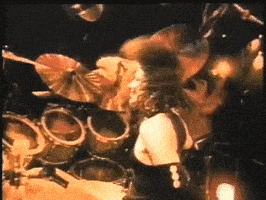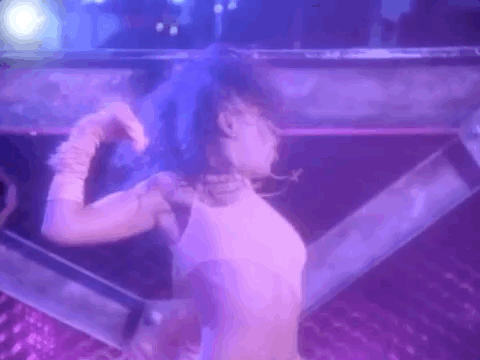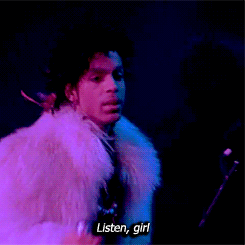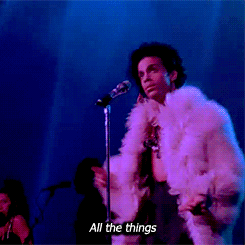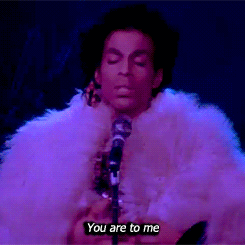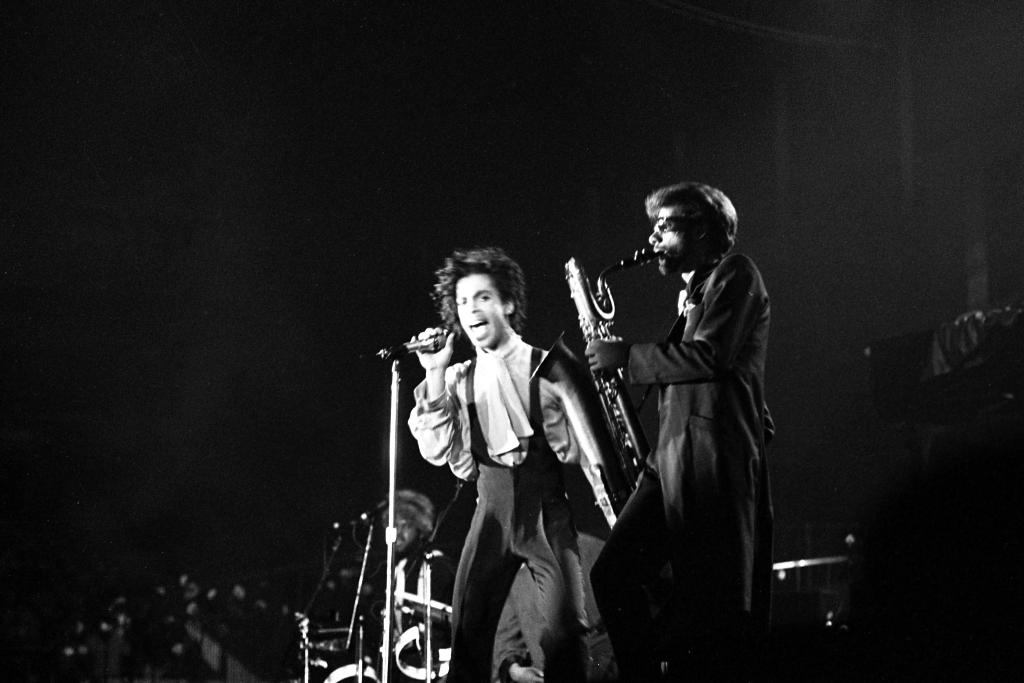| |
- E-mail - orgNote -  Report post to moderator Report post to moderator |
OldFriends4Sale said: photos by Jeff Katz By Susan Rogers on March 31, 2017 Prince's engineer remembers the making of a Sign O' The Times classic on the album's 30th anniversary Susan Rogers dropped out of high school in Southern California to teach herself how to be a sound engineer and technician. By 25, she was working for Crosby, Stills and Nash at their Rudy Records studio, and in 1983, Rogers began five years of work as Prince's engineer – a period covering Purple Rain, Sign O' The Times, Parade and more. Rogers went on to record, mix and/or produce artists such as the Jacksons, Laurie Anderson and David Byrne, but nowadays she focuses on the academic side of things, with a doctorate in psychology from McGill University and as director of the Berklee Music Perception and Cognition Laboratory, where her research focuses on auditory memory, psychoacoustics and the perception of musical signals. In this excerpt from her lecture at the 2016 Red Bull Music Academy, Rogers shares the story behind the making of one of Sign O' The Times classic tracks, "The Ballad of Dorothy Parker." . We listened to Kate Bush a moment ago, and I was thinking, "Man, I wonder where the filter setting was on the high-pass filter on her voice?" I know from people who worked with her that she would boost 5K like mad, and she would sing her vocal through this little Fostex semi-pro preamp to get that really bright vocal, because it cut through on radio. It was great; lots of 5K. But the opposite was true on "The Ballad of Dorothy Parker," and it was a mistake.We were installing a new custom-made console in his home studio. Paisley Park was being built, but it wasn't finished yet. The fellow who designed this console, whose name was Frank De Medio, came in from Los Angeles. He was hooking it all up and Prince couldn't take it anymore. He was just dying to record, and he told me to send Frank home. He says, "Just send him home. I just got to work." We put Frank on a plane and we sent him home, and Prince came downstairs and said the magic words: "Fresh tape." I put up fresh tape, and we started recording the song. As soon as I heard it, I realized, "Oh my God, there is no high end." It was the opposite of Kate Bush. It sounded like there were low-pass filters on everything. First, I was thinking it was just one track. It wasn't. It was the whole console. I'm thinking, "Oh, please stop, so I can get out the voltmeter and see what's going on with this console." But he wouldn't stop, and he just kept going, and going, and going. It was like a baby eating baby food. It's like, when's it going to stop? He just kept going, and going, and going. We finished the song, and then we mixed it. He didn't stop, which was typical of him. I kept thinking, "Isn't he noticing that there's something weird with this?" We finally mixed the song. It was like a day later, and then he gets up and he's all happy, because he got the song then. He goes, "That was great. Good." And then he goes, "This console's nice. It's kind of dull, isn't it?" Then he goes upstairs, and he's happy! I take out the voltmeter and I finally get to check the power supplies. As some of you may know, consoles have bipolar power supplies. There's usually a plus-or-minus 15, or a plus-or-minus 24 depending on the manufacturer, and one whole power supply was completely down, so it was only swinging half the current that it could normally swing. It had no high end, because it couldn't swing the current fast enough to give us high end, so the song ends up sounding like it's kind of underwater. I was able to fix it, but only after the fact. I wasn't able to fix it for this song. The drums were just one take. That's how he would do it. If he made a mistake he would stop, and you would just punch in. He's playing all the instruments. With the LinnDrum machine, you could set up a simple one or two bar loop very easily, and then, with the pads, you could just play rolls on the snare or toms or high-hat, and that's what he was doing with that. He would set it up and hit record on the tape machine and just let it roll, and if we made a mistake, we could go back and punch in. Well, we couldn't actually with the drums, because we weren't locking to it, but on other instruments, after he finished and laid down the drum machine, I'd hand him the bass and he'd put on the bass bar, and then he'd do the keys, and halfway through he'd do the vocal and the backing vocals, and then we'd finish it up with the remaining overdubs, and we were done. Because so many of his tracks were dance tracks, he would want a long version of things, so the original track of this, it's probably really long. It might be eight or nine minutes long. It could even be longer. When you're sequencing a record and you know where the song is going to go in the sequence, sometimes you're going to want it to fade out so you can crossfade it into the next song, or sometimes you just want a little breather in the sequence. He would wear headphones and with no click, reading the lyrics, he would play the entire drum part from top to bottom with the fills and the breaks and everything, just mentally singing the song in his head. I'd have to be just ready for anything. He'd call me and sometimes he'd tell me what instruments to set up. He'd want acoustic piano or electric piano or whatever, but oftentimes he would just have me come to the studio, and there'd be a note written. In fact, I still have one at home, just a note from him that says "Set up this, this, this, this, this and this," but by a certain point I knew him well enough that I could read what it was he wanted set up. Like, if he says "acoustic piano and a long reverb," we're going to be doing a ballad, and then it would be my choice what reverb to use or what mics to use on the piano. He didn't care about those details; I could do it however I wanted. The other half of the time, he would write the lyrics after the track took shape. But if he came in with lyrics written, like he did with "Dorothy Parker," or with a song that he was going to play acoustic drums on, he would take the lyrics and he'd either tape them to a tom, if he wasn't going to play a tom; or I'd tape them to a mic stand in front of the kit. He would wear headphones and with no click, reading the lyrics, he would play the entire drum part from top to bottom with the fills and the breaks and everything, just mentally singing the song in his head. He'd lay down this acoustic drum track, come into the control room, lay down the bass and then everything else, and then eventually sing it. He would have, not full arrangements in his head, but he'd had basic arrangements in his head as he was making the track. He knew what he wanted it to sound like. I hate that look. He looks like a ghostly, pale girl. Even that fur coat one from the same session. Horrible lightning. On stage, he never looked like that again. [Edited 10/23/20 11:41am] | |
- E-mail - orgNote -  Report post to moderator Report post to moderator |
| |
- E-mail - orgNote -  Report post to moderator Report post to moderator |
| |
- E-mail - orgNote -  Report post to moderator Report post to moderator |
| |
- E-mail - orgNote -  Report post to moderator Report post to moderator |
| |
- E-mail - orgNote -  Report post to moderator Report post to moderator |
| |
- E-mail - orgNote -  Report post to moderator Report post to moderator |
| |
- E-mail - orgNote -  Report post to moderator Report post to moderator |
I never understood why he wore makeup (asde for the stage). I always thought he looked way better without it. This "era" was just incredible. The colors, music, videos, etc. | |
- E-mail - orgNote -  Report post to moderator Report post to moderator |
He was a big fan of Charlie Chaplin, I think that is a discussion we've only touched on. I remember reading something from one of the members of Tony Toni Tone when he performed in Sheila E's band for the 3rd album and he talked about how Prince was big on caking makeup on them. . I think of Jerome during the Parade era more specifically the UTCM movie, and Jerome had a lot on compared to almost nothing when he was in the Time. Morris and Jesse were the main two that were made up(the visually represented Prince) | |
- E-mail - orgNote -  Report post to moderator Report post to moderator |
- E-mail - orgNote -  Report post to moderator Report post to moderator |
Thanks for the insight. I can understand for "work" and photo shoots and such, but I always enjoyed the photos of him less makeup. Interesting he was a Charlie Chaplin fan, I can see back then the need for makeup with film in it's infancy. Sometimes, I thought perhaps the heavy makeup was a mask for Prince, another way for him to stay distant (maybe not a good word) from the public. He can sort of hide behind. Just me being crazy. | |
- E-mail - orgNote -  Report post to moderator Report post to moderator |
No I thinnk you are onto it. I'll locate the article from the Gold Experience, where he talked about something similar. But that wasn't in connection to the 80s period.
Like riding a bicycle
| |
- E-mail - orgNote -  Report post to moderator Report post to moderator |
| |
- E-mail - orgNote -  Report post to moderator Report post to moderator |
| |
- E-mail - orgNote -  Report post to moderator Report post to moderator |
Only guessing...but I bet he kinda needed them. | |
- E-mail - orgNote -  Report post to moderator Report post to moderator |
He could sure do eyeliner... also very good @ hiding those pesky under-eye circles w/ concealer. | |
- E-mail - orgNote -  Report post to moderator Report post to moderator |
| |
- E-mail - orgNote -  Report post to moderator Report post to moderator |
| |
- E-mail - orgNote -  Report post to moderator Report post to moderator |
| |
- E-mail - orgNote -  Report post to moderator Report post to moderator |
June 20th, 1987: HOLLAND
| |
- E-mail - orgNote -  Report post to moderator Report post to moderator |
| |
- E-mail - orgNote -  Report post to moderator Report post to moderator |
| |
- E-mail - orgNote -  Report post to moderator Report post to moderator |
| |
- E-mail - orgNote -  Report post to moderator Report post to moderator |
| |
- E-mail - orgNote -  Report post to moderator Report post to moderator |
| |
- E-mail - orgNote -  Report post to moderator Report post to moderator |
| |
- E-mail - orgNote -  Report post to moderator Report post to moderator |
| |
- E-mail - orgNote -  Report post to moderator Report post to moderator |
| |
- E-mail - orgNote -  Report post to moderator Report post to moderator |
LeRoy Bennett's sketch for the SOTT stage | |
- E-mail - orgNote -  Report post to moderator Report post to moderator |
 New topic
New topic Printable
Printable







